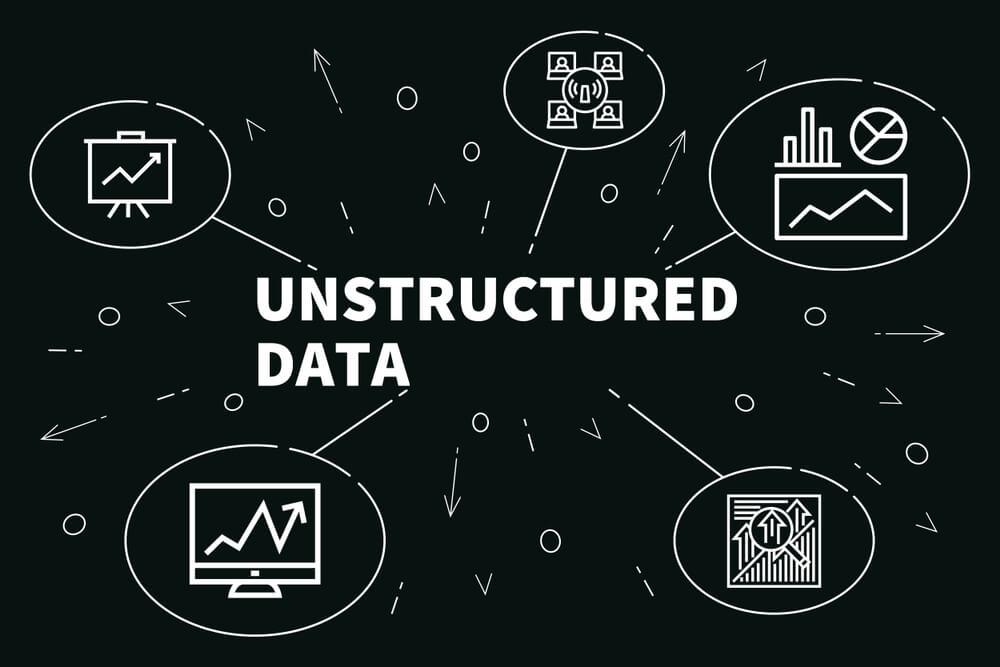
Structured vs Unstructured Data: Best Ways To Use Each One
Understanding the differences between structured and unstructured data is pivotal in analytics and decision-making, especially in search engine optimization (SEO). A SEO agency leverages these data types to unlock new opportunities that scale the business or sustain growth.
This guide explains how structured data’s organization and unstructured data’s depth offer complementary perspectives on business operations and customer behavior, covering:
- Defining structured and unstructured data
- Applications of each data type
- How to leverage and combine them
- Challenges with unstructured data
- Data management best practices
We have a lot to discuss, so get ready to take notes. Let’s go!
Want to learn more about the Digital Authority Partners approach to SEO? Watch this video!
Structured Data: Organizing Information
Structured data such as schema markups is, at its simplest, organized data. Consider it information that is stored so computers and search engines can easily understand and use it. It often lives in tables or databases where everything has its specific place, such as names in one column and addresses in another.
Structured data is everywhere in business. It is in the customer details saved in custom relationship management (CRM) systems, the financial records kept in accounting software, and the product lists maintained in inventory databases.
This organized format is perfect for generating precise reports, measuring performance, and conducting deep analyses to make intelligent decisions.
Applications of Structured Data
Structured data shines across business operations thanks to its organized format. It simplifies complex processes, from database management to customer interactions and financial tracking. Its impact is highest in:
- Databases: It acts as an organizer, speeding up information search and analysis.
- CRM systems: It keeps customer details neat and accessible, enhancing relationship management.
- Financial records: Structured data streamlines the recording and analysis of economic data for more precise insights.
- Reports and metrics: It makes generating precise business performance reports more straightforward.
Structured data boosts a website’s SEO. Besides generating rich snippets, it elevates the user experience, stresses the content’s relevance to targeted keywords, and improves crawlability and indexability.
This blend of operational efficiency and enhanced online presence demonstrates structured data’s pivotal role in businesses and digital marketing strategies.
Unstructured Data: Providing Insights

Unstructured data is all the information that does not fit neatly into tables or spreadsheets. It is the vast and varied content we encounter daily such as emails, social media chatter, videos, and articles. It offers many insights into customer behavior, trends, and more.
This data’s free-form nature means it is rich with potential but tricky to handle. Big data projects thrive on unstructured data, providing a deeper, more nuanced look into what people are saying and feeling.
While unstructured data leads to valuable business insights, making sense of it often requires advanced tools to dig through text and images to find helpful information.
Employing both unstructured and structured data propels businesses forward, offering a more complete picture of their competitiveness and growth.
Leveraging Unstructured Data
Unstructured data is a gold mine for businesses aiming to stay ahead of the curve. Let us discuss how tapping into this wealth of information drives success:
- Unlock marketing potential. Dive into social media buzz and customer reviews to understand what resonates with the audience. This insight sharpens your marketing strategy, making it more relevant and impactful.
- Know customer sentiment. Sift through comments and feedback to clearly understand the market’s brand perception. This enables you to improve products, services, and messaging to better meet expectations.
- Fuel product innovation. Detailed insights from unstructured data spotlight what features or new products customers need, strategically guiding development teams.
- Discover new opportunities. Unstructured data sparks creative solutions to business challenges. It also uncovers overlooked opportunities from focusing on structured data alone.
Unstructured data insights deepen your market understanding, refine your offerings, and keep you ahead of competitors.
Challenges with Unstructured Data
Although unstructured data is a significant source of insights, it has limitations and challenges. The following are common challenges businesses face with unstructured data:
- Storage and organization: From lengthy videos to extensive social media posts, unstructured data requires a lot of storage space. Organizing it for accessibility and relevance is complicated.
- Analysis complexity: Because unstructured data is varied, voluminous, and free-form, analyzing it is time-consuming and demanding. Traditional data analysis tools often fall short, requiring more advanced solutions.
- Interpretation difficulties: Interpreting unstructured data is daunting, even with the right tools. The nuances of language, sentiment, and cultural context complicate analysis, making it hard to draw accurate conclusions.
- Integration with structured Data: Getting a complete picture means integrating unstructured data insights with structured data analytics. However, merging different data types sometimes leads to technical issues and data quality loss.
Despite these hurdles, the value of unstructured data is undeniable. Businesses can overcome these challenges with the right strategies, tools, and technologies. An expert SEO agency unlocks its full potential to drive growth and innovation.
Integrating Structured and Unstructured Data

Merging structured and unstructured data transforms how you see your business and understand your customers. Merge with ease using these tips:
- Pick the right tools. Choose analytics platforms that handle both data types to make generating insights easier regardless of source.
- Plan the data approach. Think about how structured data (customer ages and locations) and unstructured data (comments or reviews) work together to strategically tailor marketing strategies.
- Keep the data clean. Ensure processed structured and unstructured data is current and correct. You can only trust insights from good data.
- Visualize the insights. Sometimes, seeing the data in a graph or chart provides a more transparent, complete idea about your business and the market, aiding decision-making. Use visualization tools to help everyone understand the data’s context and relevance.
Effectively blending structured and unstructured data enhances your perspective on growth and informs you about what the market truly needs.
Data Management Best Practices
Effective data management requires smart strategies, especially when dealing with structured and unstructured data. Below are the best practices:
- Use artificial intelligence (AI) to streamline data handling. AI tools automatically sort, clean, and analyze big data, saving time and reducing mistakes. This helps make insights more accurate and trustworthy.
- Keep the data clean. Routinely check and update your data to keep it accurate, relevant, and valuable. Fix any errors and get rid of old information.
- Protect the information. Security is crucial in maintaining brand trust and avoiding hefty penalties and legal consequences for non-compliance. Protect the data from threats with encryption and secure access controls.
- Choose flexible storage. As your data grows, you need more room to store it. Cloud storage is an excellent option because it can grow with your needs.
- Cultivate a data-savvy culture. Help everyone in your company see the value of data. Offering training and access to data tools encourages teams to use the information in their daily decisions, making your business more innovative and more responsive to market changes.
Following these pointers, including embracing AI-driven data management, sets the business up for success. Well-organized and secure data unlocks valuable insights that drive your company forward.
Summing Up
Using structured and unstructured data is essential for any business looking to thrive in the digital age. Masterful use of various data types improves decision-making, offers insights into customer preferences, and helps you chart a course for growth.
Is your business ready to harness the power of its data more effectively? Digital Authority Partners can help. As an SEO agency, we specialize in helping companies integrate and make the most of their structured and unstructured data.
Contact us today to learn how we transform your data into a powerful tool for driving your business forward.
Want To Meet Our Expert Team?
Book a meeting directly here




